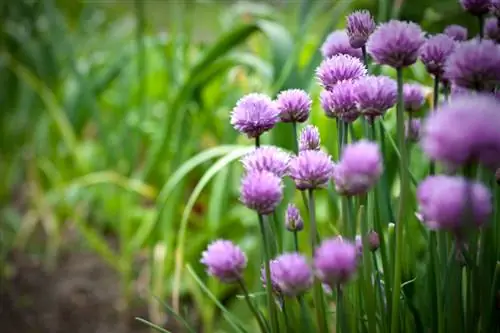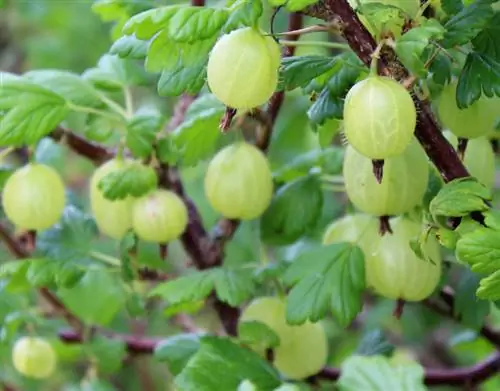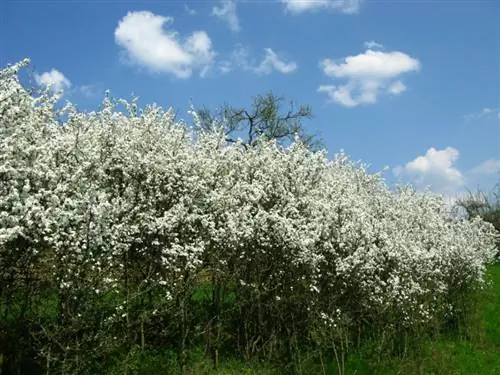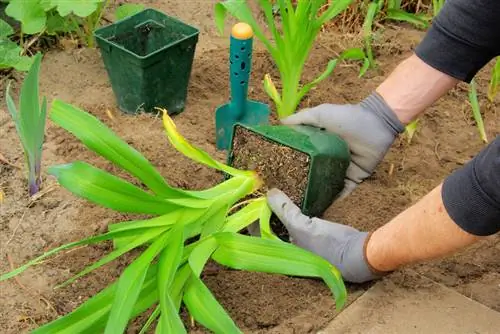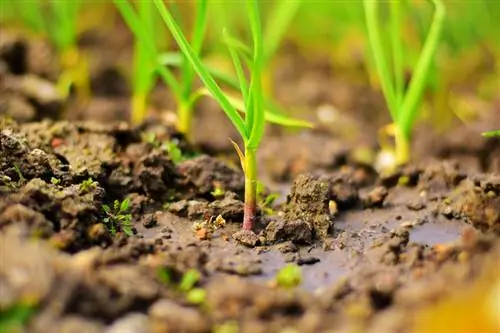- Author admin [email protected].
- Public 2023-12-16 16:46.
- Last modified 2025-01-23 11:20.
Chives are a perennial, hardy plant that can easily be propagated by division. Flowering chives look very attractive. However, you will get the most intense taste if the plant does not flower.
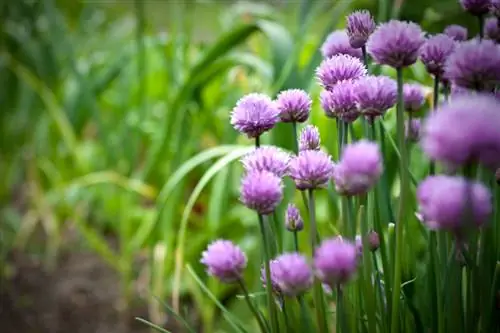
How and when should you plant and harvest chives?
Chives prefer sunny to partially shaded locations and moist, humus-rich, loose soil. You can sow it outdoors or plant young plants from mid-March. You can harvest chives about 6 weeks after sowing, especially in spring and summer.
Which location does chives prefer?
Chives love sunny to semi-shady locations, but often thrive in a shady spot too.
Which substrate does chives grow best on?
Chives need moist and, if possible, humus-rich, but at the same time loose soil. Although the herb loves moisture, it cannot tolerate waterlogging.
When is the best time to plant chives?
You can plant young chive plants in the garden bed from mid-March. Chives are very insensitive to cold and will most likely survive subsequent night frosts well.
Can I also sow chives?
Of course you can also grow your chives yourself from the black seeds. It is a dark germinator whose seeds germinate poorly in warm conditions. Plant the seeds outdoors around mid-March and cover them with a layer of soil about one to two centimeters thick. The seeds germinate best at temperatures between 1 and 10 °C. However, only the earth should be free of frost.
Do I have to prefer chives?
No. It is not advisable to grow it on the windowsill or in the cold frame, as chives are cold germinators.
At what distance should the individual plants be planted?
You can plant chives in bunches and about 20 centimeters apart.
How can I transplant chives?
Actually, the chives - if they are planted in the garden - do not need to be transplanted. Only potted chives should be placed in a larger pot with fresh soil every two to three years.
How can chives be propagated?
Chives are usually propagated via seeds or by division. The best time for division is early spring, as the plant then takes root more quickly and grows in its new location. To divide, dig up the entire plant using a spading fork (€34.00 on Amazon) and cut through the rhizome with a sharp (and clean!) knife. You can then replant the two parts of chives separately. Such division should only take place every three years, otherwise the plant will be weakened too much.
When can I harvest chives?
Chives can be harvested for the first time about six weeks after sowing, but only carefully. In the first year, the young plant should not be pruned heavily as it should first become stronger. Essentially, you can harvest all year round, provided the plant has not yet flowered. It is preferable to cut from the outside in, as new shoots grow primarily inside. Leave about two to three centimeters of the stalk above the ground.
Good and bad neighbors
Chives go well with dill and parsley as well as oregano, tomatoes and strawberries.
Tips & Tricks
Although flowering chives are not only pretty to look at, they also attract bees, butterflies and other nectar-seeking insects. However, the herb loses a lot of its aroma as it flowers. Therefore, you can prevent chives from blooming by pruning the plant regularly.

